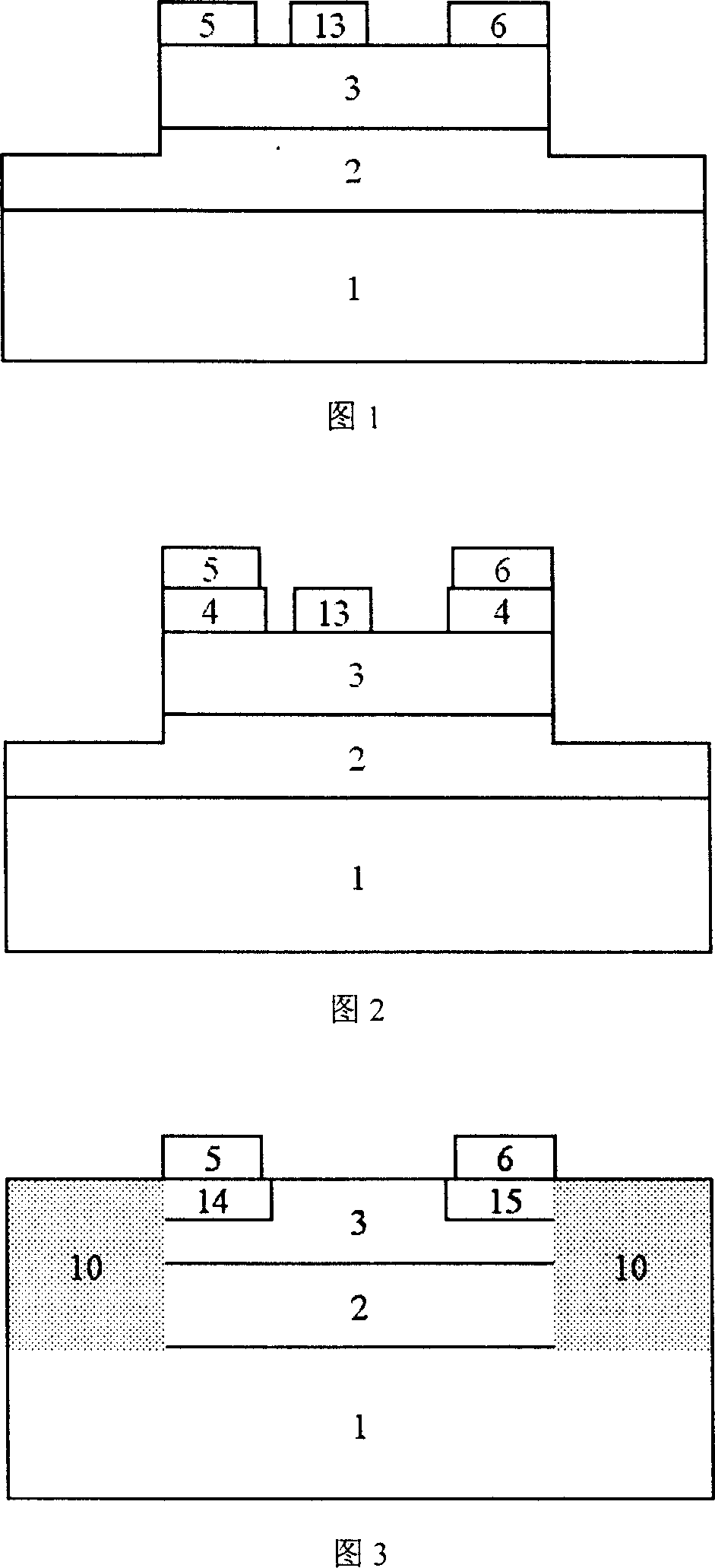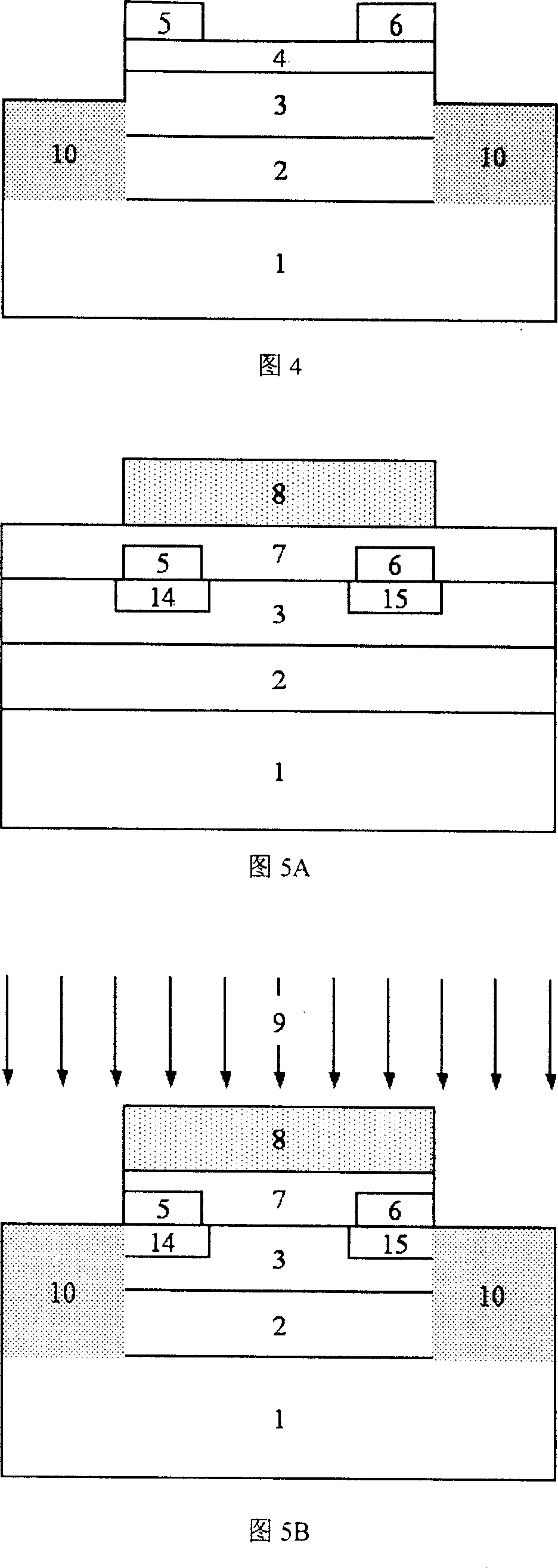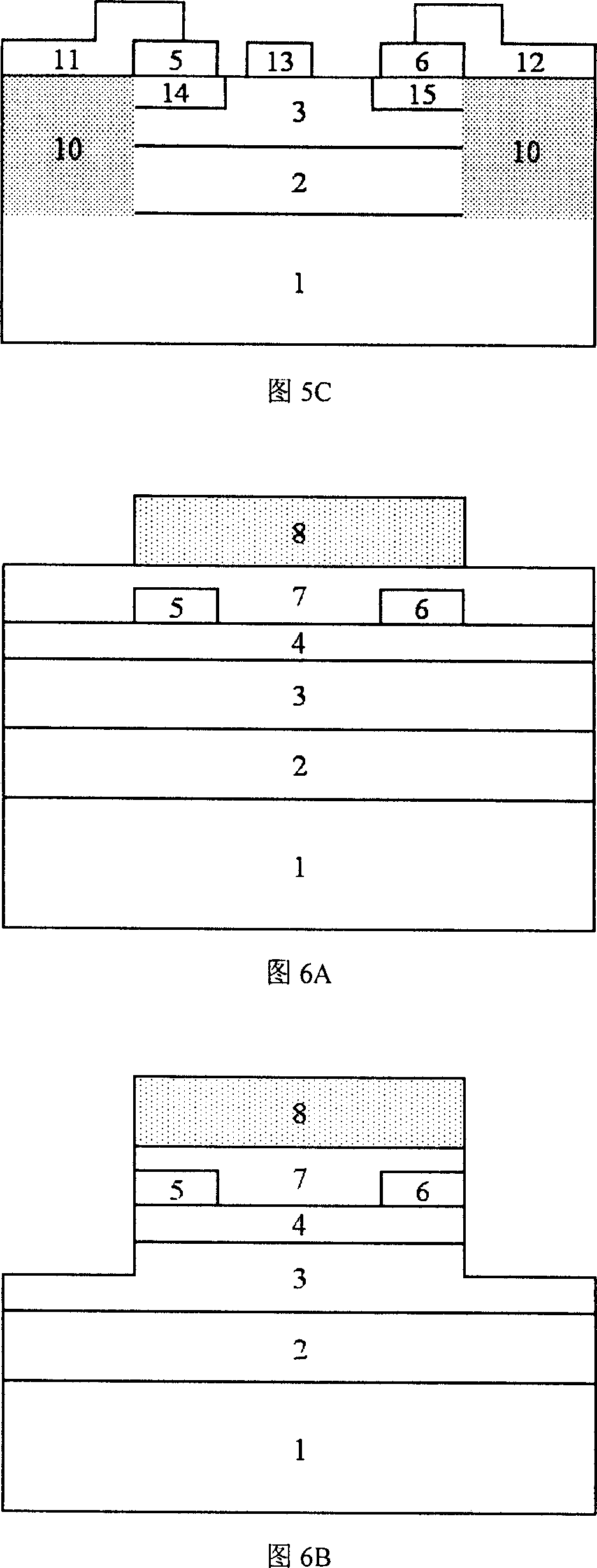Electrical isolating method for silicon carboride device
An electrical isolation, silicon carbide technology, applied in semiconductor/solid-state device manufacturing, circuits, electrical components, etc., can solve problems such as difficult processing and low yield, reduce production costs, improve performance and yield, and simplify manufacturing processes Effect
- Summary
- Abstract
- Description
- Claims
- Application Information
AI Technical Summary
Problems solved by technology
Method used
Image
Examples
Embodiment 1
[0044] As shown in Figures 5A-5C.
[0045] As shown in FIG. 5A, a first ohmic contact region 5 is formed on the selectively doped region 14 of the SiC MESFET as a source electrode, and a second ohmic contact region 5 is formed on the selectively doped region 15 which is 2 microns to 5 microns away from the first ohmic contact region 5. Two ohmic contact regions 6 serve as drain electrodes. The selectively doped regions 14 and 15 are obtained by implanting nitrogen or phosphorus ions and annealing at high temperature. Preferably, a sacrificial oxide film 7 is deposited on the surface of the SiC MESFET material with a thickness of 50 nm to 500 nm. The sacrificial oxide film includes but is not limited to silicon oxide (SiO 2 ) and silicon oxynitride (SiON), the deposition methods include but not limited to sputtering, electron beam evaporation, plasma enhanced chemical vapor deposition (PECVD); the SiC MESFET material and the surface of the device do not need to be processed by...
Embodiment 2
[0050] As shown in Figures 6A-6D.
[0051] As shown in FIG. 6A, a first ohmic contact region 5 is formed on the ohmic contact layer 4 of the SiC MESFET as a source electrode, and a second The ohmic contact region 6 serves as a drain electrode. Preferably, a sacrificial oxide layer 7 is deposited on the surface of the SiC MESFET material with a thickness of 50 nm to 500 nm. The sacrificial oxide dielectric layer includes but is not limited to silicon oxide (SiO 2 ) and silicon oxynitride (SiON), the deposition methods include but not limited to sputtering, electron beam evaporation, plasma enhanced chemical vapor deposition (PECVD); the SiC MESFET material and device surface do not need to be processed with a photosensitive film 8 The place for etching and ion implantation is protected, and the preferred thickness of the photosensitive film 8 is 2 microns to 8 microns.
[0052] As shown in FIG. 6B, using the photosensitive film 8 as an etching mask, a shallow groove is formed...
PUM
| Property | Measurement | Unit |
|---|---|---|
| thickness | aaaaa | aaaaa |
| breakdown field strength | aaaaa | aaaaa |
| thickness | aaaaa | aaaaa |
Abstract
Description
Claims
Application Information
 Login to view more
Login to view more - R&D Engineer
- R&D Manager
- IP Professional
- Industry Leading Data Capabilities
- Powerful AI technology
- Patent DNA Extraction
Browse by: Latest US Patents, China's latest patents, Technical Efficacy Thesaurus, Application Domain, Technology Topic.
© 2024 PatSnap. All rights reserved.Legal|Privacy policy|Modern Slavery Act Transparency Statement|Sitemap



